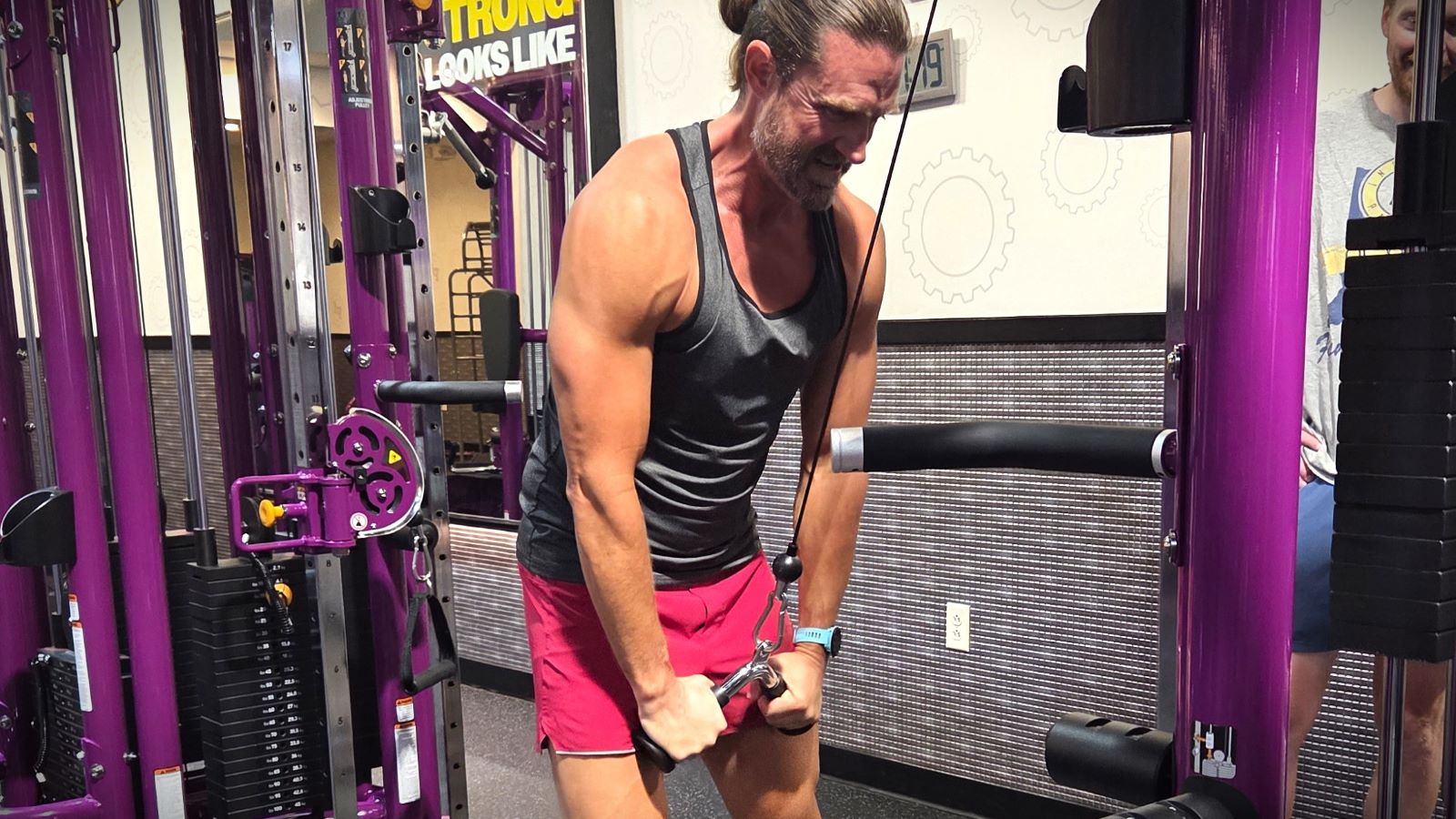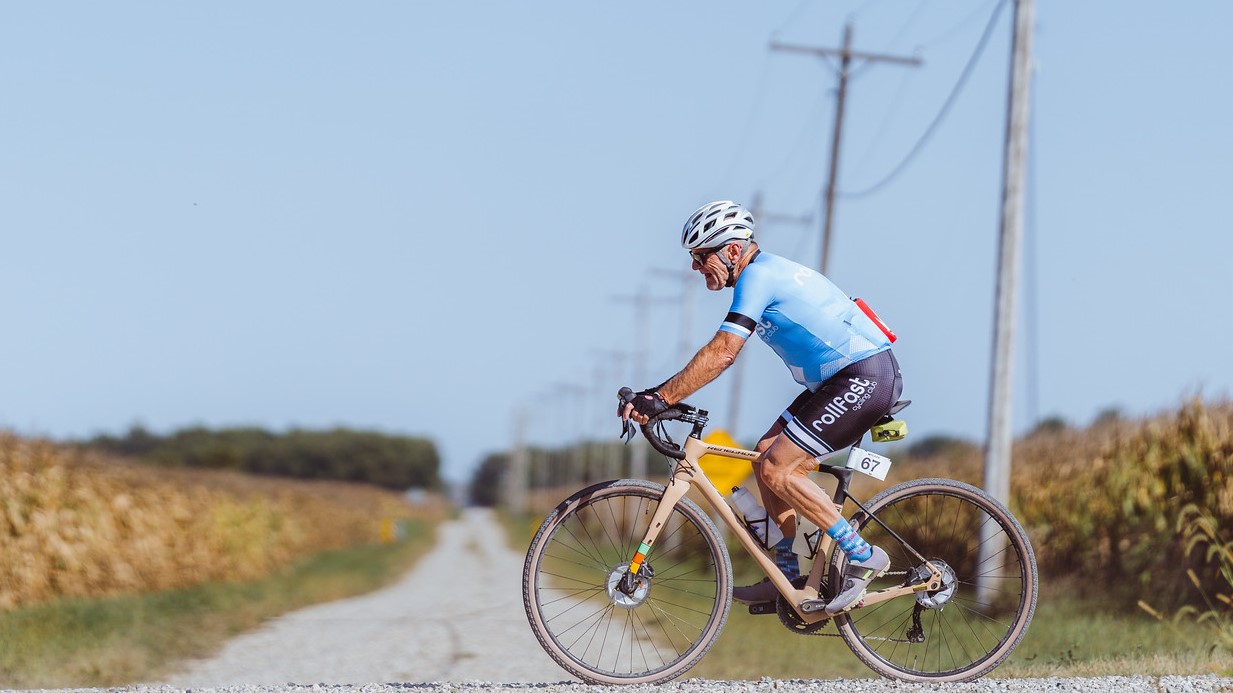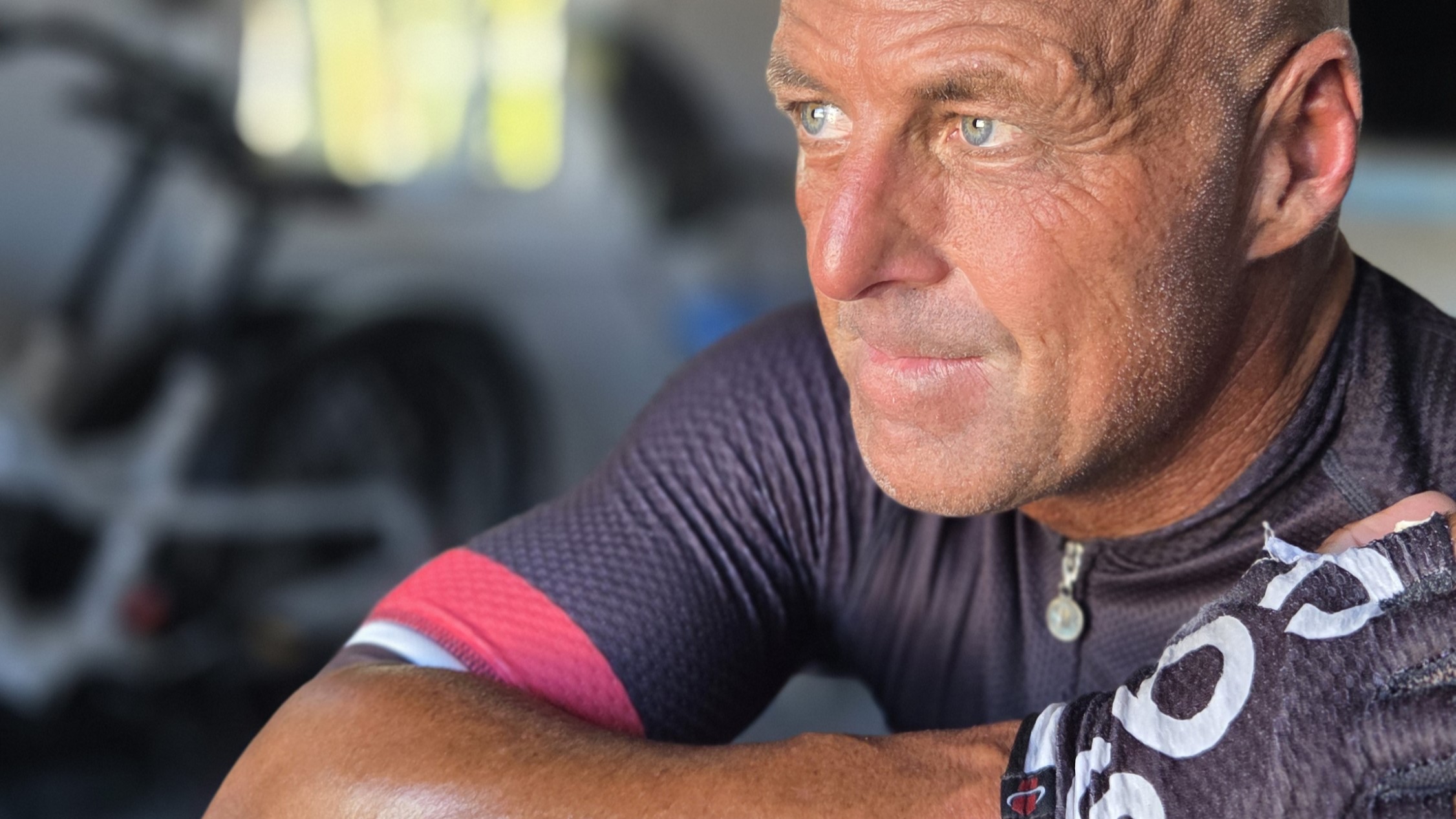THE CYCLIST’S DEFICIT: Why Your Next PR Starts in the Weight Room
We know the paradox: Cycling is the world’s greatest low-impact sport, yet chronic overuse injuries plague over half of the dedicated riders on the road.
At Rollfast Coaching, we call this the Cyclist’s Deficit. The bike demands highly specialized, repetitive movement, which inevitably creates deep musculoskeletal and postural imbalances. If you want to move past the plateau, achieve an aggressive aerodynamic position, and stay pain-free through your longest efforts, your next big performance gain won’t come from more miles—it will come from fixing the structural weaknesses holding you back.
The Three Barriers to Elite Performance
Pain, lack of functional strength, and restricted mobility are not separate issues; they are interconnected components of functional decline. Our scientific analysis confirms that three primary deficits consistently limit competitive cyclists:
1. Pain: The Core Failure and the Flexion-Relaxation Phenomenon
Low Back Pain (LBP) is the single most frequent and disruptive complaint, reported by over 50% of cyclists.¹ This is often due to the constant, deep tuck required for aerodynamics.
- Lumbar Instability: When you aggressively flex your lower back to reach the handlebars, you trigger the flexion-relaxation phenomenon. This is when the crucial deep spinal muscles (extensors) cease active contraction, shifting all supportive stress onto passive structures like ligaments and spinal discs. This accelerates strain and leads directly to chronic LBP.
- Knee Tracking: Knee pain, the second major issue, is rarely a knee problem. It’s almost always a hip stability issue. Weakness in the Gluteus Medius allows the knee to track inward during the power phase, causing friction, strain, and conditions like IT Band Syndrome.
2. Strength: The Compromised Kinetic Chain
Cycling favors your dominant prime movers (Quads, Glute Max) but ignores the essential stabilizers—the hamstrings, low back, and intrinsic hip muscles.
- Synergistic Dominance: When the true stabilizers fail, secondary muscles are forced to compensate, leading to inefficient power application and overuse injuries. Without a rigid core foundation, power transfer from your hips and legs is compromised, meaning you lose watts before they even reach the pedal.
- Endurance Stabilization: Your core and hip stabilizers need to hold a stable pelvis and controlled limb trajectory for hours, not just seconds. Our strength work prioritizes this stability endurance to prevent the power drop-offs that happen late in hard efforts.
3. Mobility: The Aerodynamic Gatekeeper
You cannot achieve “free speed” through an aggressive aerodynamic position if your body won’t let you. Aerodynamics requires flexibility, especially in your upper back and hips.
- Thoracic Spine Stiffness: If your upper back (T-spine) lacks the mobility to flex horizontally, you are forced to compensate by over-flexing your lumbar spine. This is the painful, unstable posture that compromises both power and longevity.
- Restricted Hips: Chronically tight hip flexors limit your ability to execute an efficient pedal stroke through the top dead center (TDC), forcing you to rock your pelvis or compromise saddle height.
The Rollfast Solution: The 12-Week Progressive Protocol
The Rollfast 12-Week Strength Program is your targeted solution. It follows the Minimum Effective Dose principle, ensuring every minute off the bike delivers maximum benefit to your on-bike performance without compromising training volume.
Key Program Focuses:
- Posterior Chain Development: We directly target the hamstrings, glutes, and spinal extensors with foundational lifts like Romanian Deadlifts and the Back Extension to reinforce the posterior strength that cycling neglects.
- Anti-Movement Core: Our core work focuses on anti-rotation (like the Pallof Press) and anti-extension (like Planks and Ab Rollouts), building the rigid foundation necessary to transfer power efficiently and protect the lumbar spine.
- Periodized Overload: The program is broken into three 4-week phases—Foundation, Endurance, and Maximal Strength—ensuring you progressively increase load and challenge to build a truly resilient system capable of peak athletic performance.
By integrating this structured strength work, you are not just getting stronger; you are moving past pain, unlocking a better bike fit, and raising the ceiling on your potential.
Next Steps:
Ready to build the structural resilience of an elite athlete?
Deep Dive |
Strength Program |
Mobility Routine |
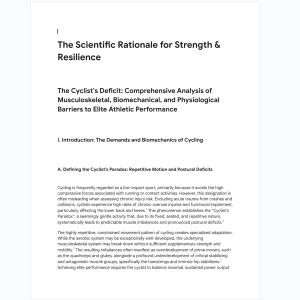 |
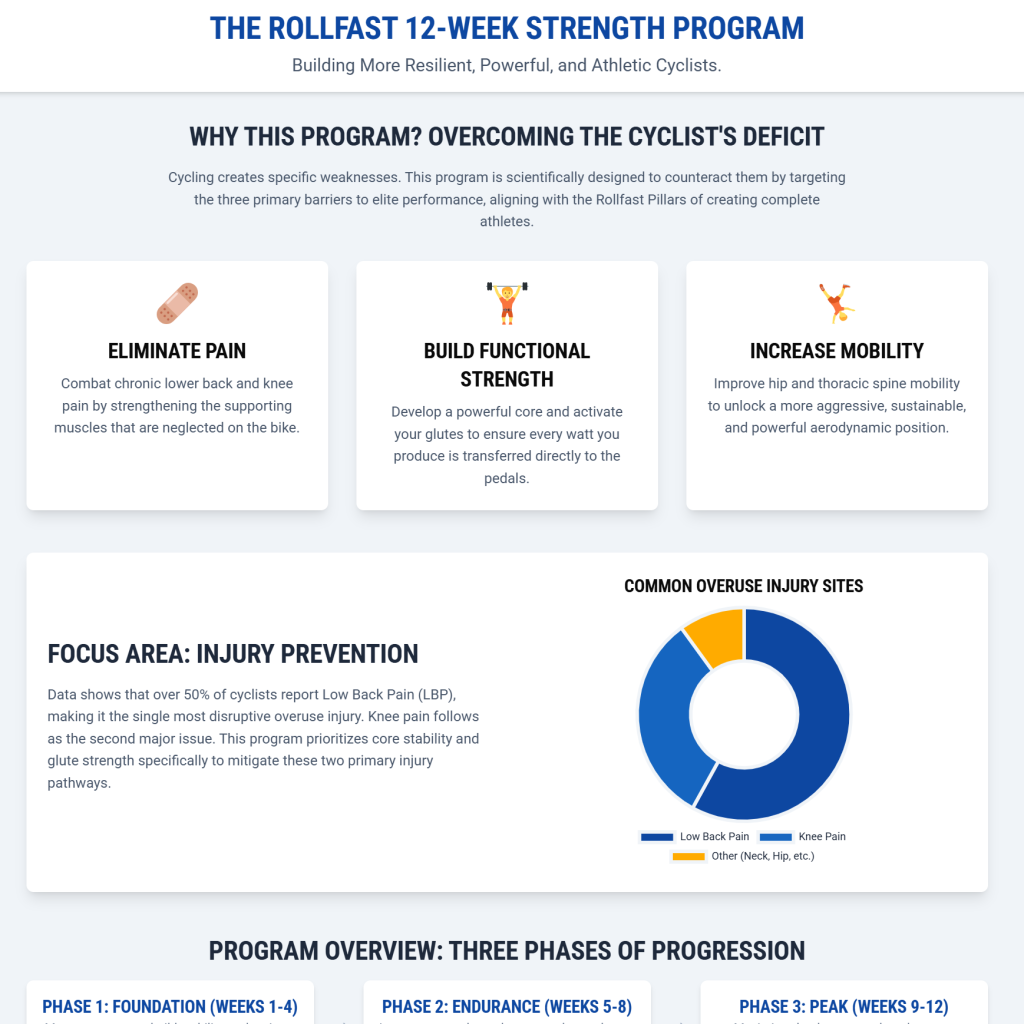 |
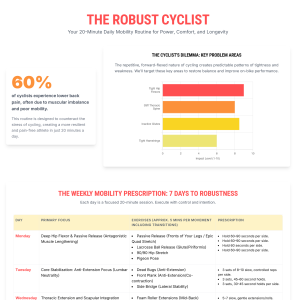 |
| Read the Scientific Rationale for Strength Training (Deep dive into the biomechanics and supporting data) |
Get the full 12-Week Strength Program (Workout tables, sets, and progressions) |
Get the Daily Mobility Routine (7 days of mobility work to keep you healthy and flexible) |


